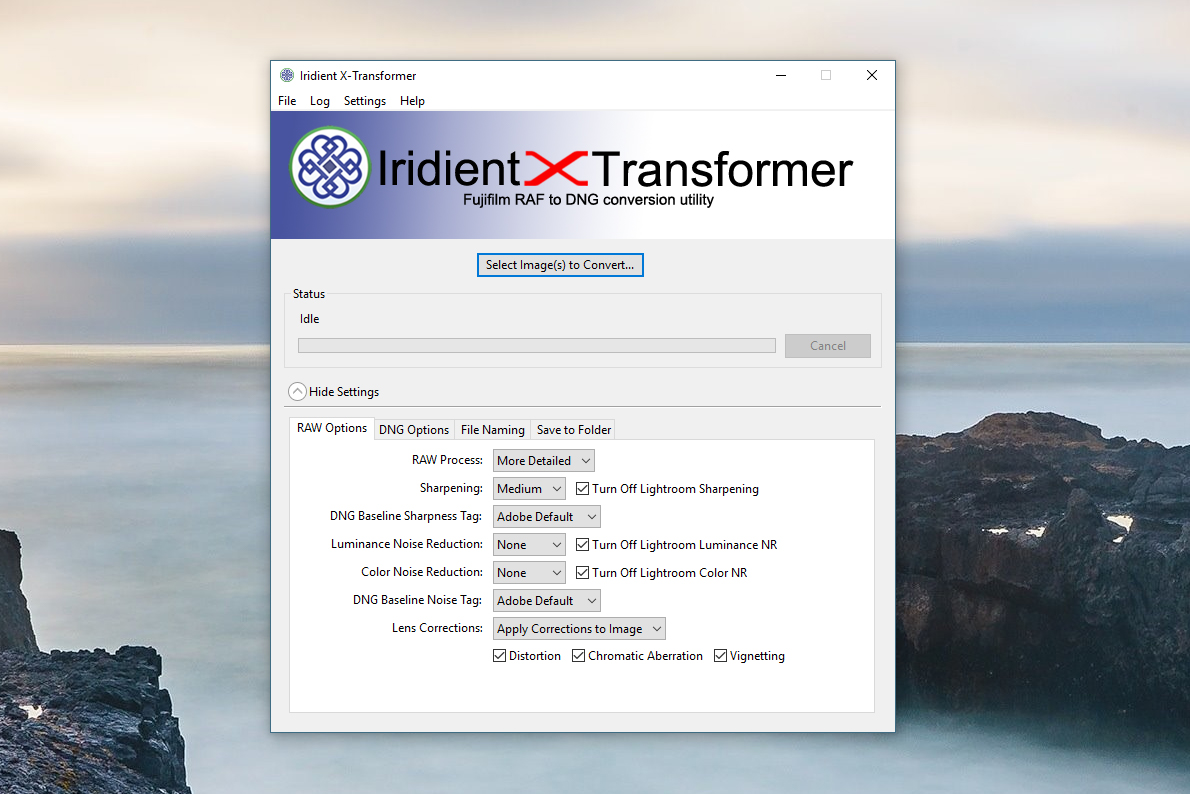

- IRIDIENT X TRANSFORMER FUJIFILM PROFILES HOW TO
- IRIDIENT X TRANSFORMER FUJIFILM PROFILES UPDATE
- IRIDIENT X TRANSFORMER FUJIFILM PROFILES SOFTWARE
- IRIDIENT X TRANSFORMER FUJIFILM PROFILES SERIES
- IRIDIENT X TRANSFORMER FUJIFILM PROFILES WINDOWS
IRIDIENT X TRANSFORMER FUJIFILM PROFILES SOFTWARE
When the Mac version comes out, the workflow will be a bit smaller.Īs software in Beta stage, this Iridient is not immune to errors, small bugs. When using this tool, I have to use another operating system to convert the RAF. You can start by downloading the beta version of Iridient X-Transformer 1.0 from here. Obviously, this is a demo version that places watermarks on the converted files. Only you can reach that conclusion, not me.

Okay, but is it worth spending about $ 30 on this tool? Yes, and maybe not. And almost the entire Internet knows that Iridient makes the demosaic of Fuji files like no other. In a very simple way, what Iridient X-Transformer does is, using the technology from the Iridient Developer, converts the RAF files to DNG.
IRIDIENT X TRANSFORMER FUJIFILM PROFILES WINDOWS
For now in Beta stage and Windows version only (Mac users will have to wait a few more days – it will be released this month). However, a few days ago a new tool that caught my attention: the Iridient X-Transformer. Sharp values in Lightroom: ‘Amount: 85’, ‘Radius: 1’, ‘Detail: 100’, ‘Masking: 25’ Example of a RAF with paint effect and ‘worms’ But I will not dwell on this subject, already so much discussed and debated on the Internet. After testing some softwares – suggested by other Fuji camera users – in the end I continued using the Lightroom, even though I know it has a difficult relationship with the fine detail of the RAF files – when we abuse the ‘Amount’ of the ‘Sharpening’ option, the so called ‘worms’ that everyone complains about, or the ‘paint’ effect, starts to appear. When I moved from the Canon DSLR system to Fuji I wrote an article about my new post processing workflow of the photographs I’m doing. So, while reading this review, please note that it refers to the first version.)
IRIDIENT X TRANSFORMER FUJIFILM PROFILES UPDATE
To learn more about the improvements in the 2017.0.2 update click here.(Edit: After the publishing date of this article, the Beta 2 version of the Iridient X Transformer was released with many fixes, including some aspects mentioned here. Version 2017.0.2, our latest update, includes these improvements to our raw processing just for these cameras as well as support for compressed Fujifiilm Raw files. If you shoot with an X-Series camera, give ON1 Photo 2017.0.2 a try, you’ll really notice the difference compared to your current processing.
IRIDIENT X TRANSFORMER FUJIFILM PROFILES SERIES
This yielded excellent image quality and processing results from Fujifilm X Series cameras while maintaining our lightning-fast decoding speed. Our user feedback has been tremendous in helping our engineers solve both of these issues. Here is the overview of the image, the area is magnified below for comparison we show. The hardness of these edges must adapt to the strength of detail in the photo so they are strong on hard edges but soft in areas that are out of focus.

These are often caused by internal masks used in raw processors to define different tonal ranges. Here are the processing results in that area using ON1 Photo 2017.0.2 and two other raw processors.Īnother processing issue we saw was the odd edges and artifacts in the bokeh, or out of focus regions in certain photos. Here is the overview of the image, the area in red is magnified below for comparison we show below.

You can read more about Joel’s thoughts on Fujifilm X-Trans processing in his recent blog post. Here is a great example of this from Joel Wolfson, a respected photographer and writer.
IRIDIENT X TRANSFORMER FUJIFILM PROFILES HOW TO
Luckily for us we already knew the causes and how to properly solve the problem. Years ago our Genuine Fractals users would get the same smeared look when upsizing their images. This issue was very familiar to us, but in a somewhat different use case. A common refrain we heard was other raw processors often created a smeared or painterly look in areas of texture like grass, bark and rock. When we first started this work we listened to our Fuji users and reviewed the processing results other tools in the market produced. For most cameras there has been years of research to optimize these algorithms for speed, quality and reduced errors (noise). These approaches don’t translate directly to the X-Trans layout which forced our engineers to develop a new and unique algorithm for Fujifilm X Series cameras. Here is what that looks like.įrom a software developers prospective, the way you interpolate, or debayer the raw data from these cameras is quite different from the algorithms we use for most other cameras. They also claim this layout provides for better color reproduction with less color noise. Fujifilm claims this filter layout reduces moire patterns naturally so you don’t need an anti-aliasing filter which can soften details in your photos. These sensors use a unique color filter pattern compared the the traditional Bayer pattern that most cameras use. Some of you out there shoot with Fujifilm® X series cameras that use the X-Trans® CMOS sensor.


 0 kommentar(er)
0 kommentar(er)
